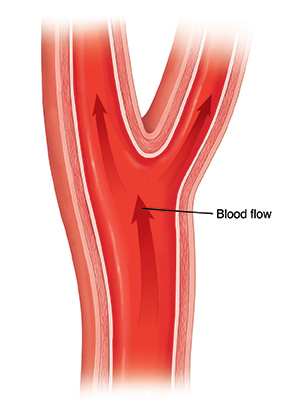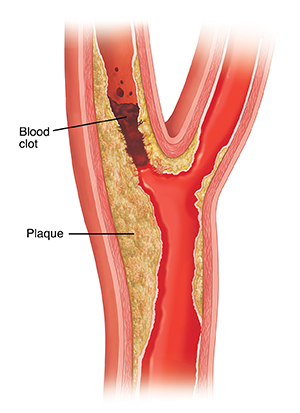What Is Ischemic Stroke?
The brain needs a constant supply of blood to work. During a stroke, blood stops flowing to part of the brain. The affected area is damaged. Its functions are harmed or even lost. Most strokes are caused by a blockage in a blood vessel that supplies the brain. This is an ischemic stroke. They can also occur if a blood vessel in the brain ruptures (hemorrhagic stroke).
 |
| The carotids are large arteries that carry blood from the heart to the brain. |
From the heart to the brain
The heart is a pump. It sends oxygen-rich blood out through blood vessels called arteries. If an artery between the heart and the brain is blocked, the brain can’t get enough oxygen. Some artery blockages are caused by fatty deposits (plaque). Arteries can also be blocked by blood clots. Some clots form on the plaque. Others can form in the heart—especially in people with atrial fibrillation, an irregular heart rhythm. If a piece of plaque or clot breaks off and enters the bloodstream, it can block flow to the brain and cause a stroke.
How a stroke occurs
Ischemic stroke occurs when an artery that supplies the brain is greatly narrowed or blocked. This can be caused by a buildup of plaque. It can also occur when small pieces of plaque or blood clot (emboli) break off from the blood vessel or heart into the bloodstream. The emboli flow in the blood until they get stuck in a small blood vessel that limits blood flow to the brain.
Healthy arteries. In a healthy artery, the lining of the artery wall is smooth. This lets blood flow freely from the heart to the rest of the body. The brain gets all the blood it needs to function well.
Damaged arteries. High blood pressure, cigarette smoking, high cholesterol, or other problems can roughen artery walls. This allows plaque to build up in the walls. Blood clots may also form on the plaque. This can narrow the artery and limit blood flow.
 |
| Healthy arteries |
 |
| Damaged arteries |
Know the symptoms of a stroke
-
Weakness. You may feel a sudden weakness, tingling, or a loss of feeling on one side of your face or body including your arm or leg.
-
Vision problems. You may have sudden double vision or trouble seeing in one or both eyes.
-
Speech problems. You may have sudden trouble talking, slurred speech, or problems understanding others.
-
Movement problems. You may have sudden trouble walking, dizziness, a feeling of spinning, a loss of balance, a feeling of falling, or blackouts.
Remember: If you have any of these symptoms, call 911 and your doctor as soon as possible.
B.E. F.A.S.T. is an easy way to remember the signs of a stroke. When you see the signs, you will know what you need to call 911 fast.
B.E. F.A.S.T. stands for:
-
B is for balance. Sudden loss of balance or coordination.
-
E is for eyes. Vision changes in one or both eyes.
-
F is for face drooping. One side of the face is drooping or numb. When the person smiles, the smile is uneven.
-
A is for arm weakness. One arm is weak or numb. When the person lifts both arms and the same time, one arm may drift downward.
-
S is for speech difficulty. You may notice slurred speech or trouble speaking. The person can't repeat a simple sentence correctly when asked.
-
T is for time to call 911. If someone shows any of these symptoms, even if they go away, call 911 right away. Make note of the time the symptoms first appeared.
Online Medical Reviewer:
Deepak Sudheendra MD
Online Medical Reviewer:
L Renee Watson MSN RN
Online Medical Reviewer:
Rita Sather RN
Date Last Reviewed:
4/1/2024
© 2000-2025 The StayWell Company, LLC. All rights reserved. This information is not intended as a substitute for professional medical care. Always follow your healthcare professional's instructions.